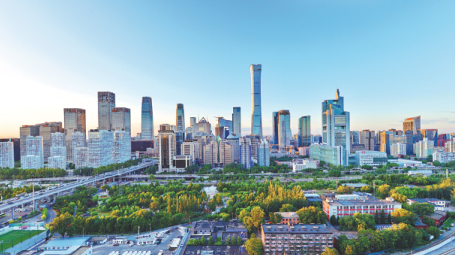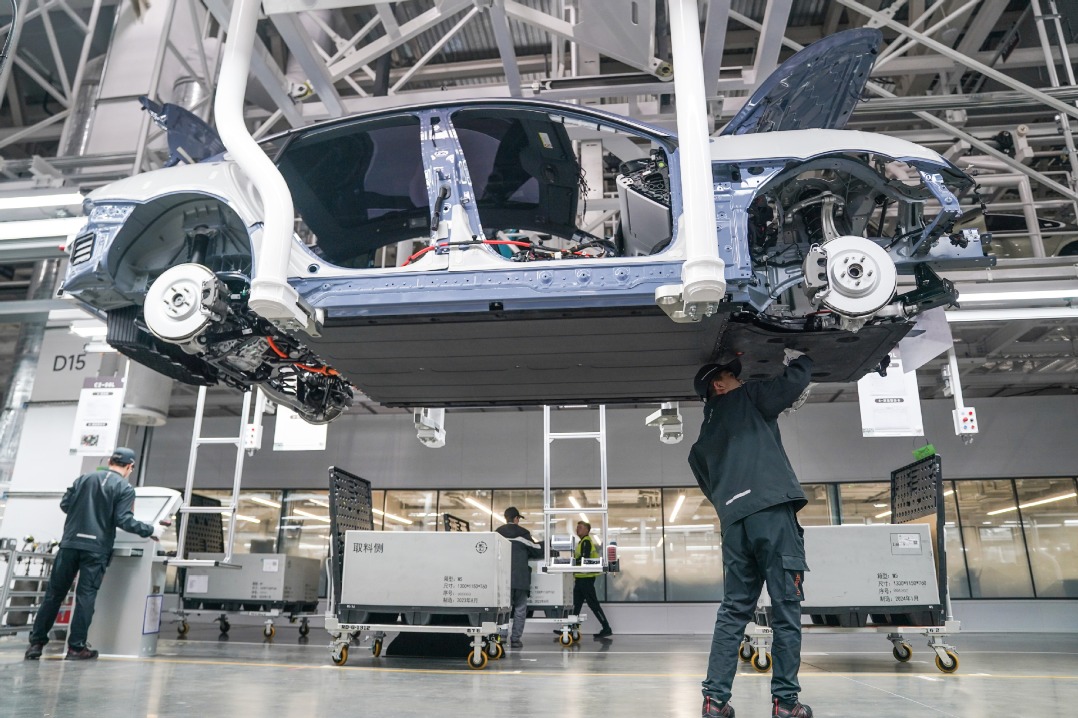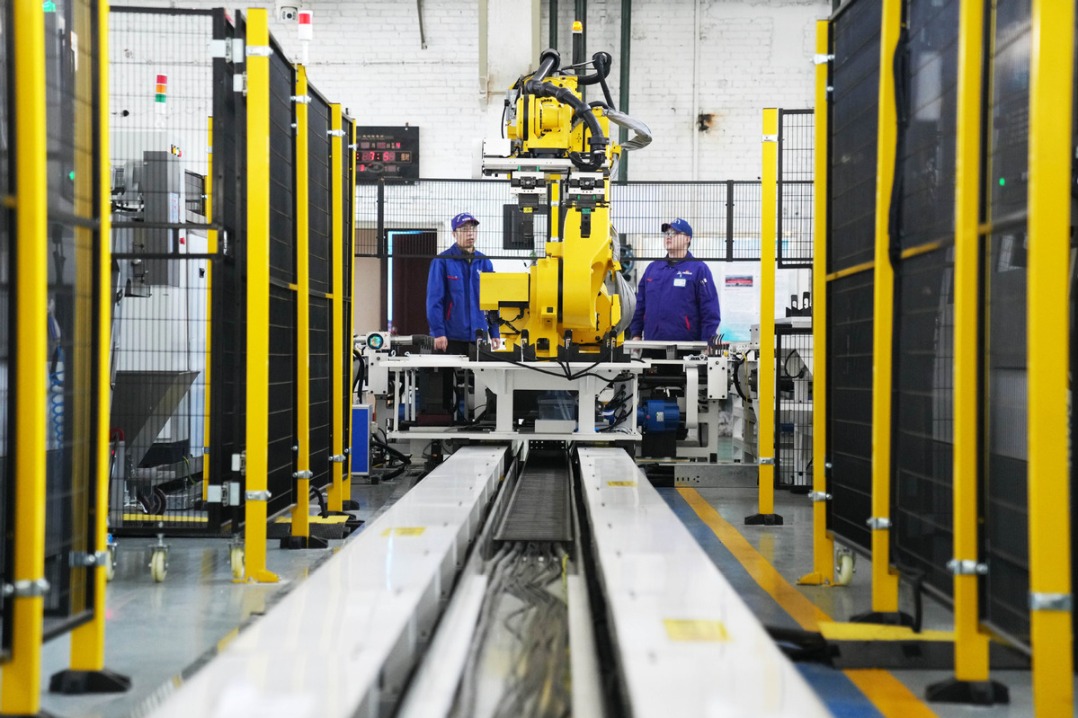CBD, free trade and cooperation zones continue to bring innovation

As a concentrated display of the capital's modernization and international influence, Chaoyang district is playing a vital role in advancing Beijing's international trade and high-end services based on its booming business districts.
The local governments of Chaoyang, Tongzhou and Shunyi districts recently unveiled the International Business Service Area of the China (Beijing) Pilot Free Trade Zone.
The area will focus on the development of digital and cultural trade, conventions and exhibitions, medical care, international delivery logistics, cross-border finance and other industries.
With a total area of 48.34 square kilometers, the area covers two business zones in Chaoyang-Beijing's central business area and the Jinzhan International Cooperation Service Zone-and the city's sub-central canal business district in Tongzhou, the Zhangjiawan Design Town and the Beijing Capital International Airport area in Shunyi.
Beijing's CBD has formed an industrial pattern led by international finance, high-end business and cultural media. It has more than 2500 foreign-invested companies, 160 Fortune Global 500 companies and 55 regional headquarters of multinational companies. It houses more than 65 percent of foreign-funded financial institutions and more than 90 percent of international media organizations in Beijing.
A report released by the Global Economic Innovation Federation shows the Beijing CBD surpassed Singapore and Chicago, ranking seventh among the 21 top business districts in the world. It was ranked first in China and second in all of Asia.
In the future, the Beijing CBD will further leverage its advantages in international resources to strengthen financial services and relax industry access in professional services while facilitating investment and trade.
Officials in Beijing's CBD plan to explore potentially relaxing the certification standards for regional headquarters of multinational companies.
The CBD will also consider relaxing restrictions on foreign investment access, credit rating, consulting and investigation, legal services and intellectual property. Officials hope relaxing the policies will attract more foreign capital.
Striving to promote the construction of a world-class CBD and a highland for Beijing's opening-up, Beijing's CBD will gather well-known professional institutions in China and abroad to up the quality of services, human resources, commerce and logistics, e-commerce, and encourage overseas arbitration institutions and dispute resolution institutions to set up business operations in the region.
Beijing's CBD has explored the Internet Plus supervision model and strengthened the data processing capability of the supervision system by improving the accuracy of supervision data.
Another key area in the plan is Chaoyang's Jinzhan International Cooperation Service Zone, which serves as the core area in the building of an international exchange center in the capital.
Its high-quality urban environment and large-scale green development allow the Jinzhan zone to focus on the development of 5G, the internet of things and artificial intelligence while increasing international cooperation in the fields of digital economy, industrial parks and training. It hopes to support digital currency and its use.
Located at the north end of the Millennium Grand Canal, the Canal Business District is a pioneer and demonstration area for the construction of Beijing's urban sub-center.
Based on the industrial function positioning of finance plus headquarters, the district will focus on financial and high-end businesses that serve the coordinated development of the Beijing-Tianjin-Hebei region, and build a comprehensive functional area focusing on financial innovation, internet, and high-end services.
Zhangjiawan Design Town is closely connected with the "innovative development axis" of the sixth Ring Road and the ecological civilization belt of the Grand Canal. The design town focuses on innovative design and urban technology industries.
It is home to a group of leading design enterprises and institutions, including some 100 high-tech enterprises, six subsidiaries of China Construction Technology Consulting Group and four design companies under the Beijing Institute of Architectural Design. It also includes LKK, a Beijing-headquartered creative design company, Beijing Industrial Designing and Researching Institute and Tsinghua Tongheng Urban Planning& Design Institute.
The design town aims to attract more top international agencies, masters, and designers in the future, in hopes of creating a highland for cultural creativity and design services in the southeast of the sub-center.
As the core component of the international business district, the Beijing International Capital Airport and its surrounding areas have outstanding characteristics such as leading policies and the integrated development of port, industry and city.
The airport has reached 147 domestic destinations and 132 international destinations in 65 countries and regions around the world.
In 2019, the passenger throughput exceeded 100 million while the cargo and mail throughput reached 1.95 million tons.
The airport also focuses on developing high-end service industries to build a global economic innovation area and a competitive integrated demonstration zone.

MOST POPULAR
- 1 A look at China's economy in Q1 of 2024
- 2 China to remove foreign ownership restrictions in value-added telecom services in pilot areas
- 3 Query service of A Guide to Working and Living in China as Business Expatriates launched
- 4 Clear negative lists to speed up services trade
- 5 Canton Fair opens in China with surge in overseas purchasers
Editors' Picks
 Infographic:
How to understand China's production capacity
Infographic:
How to understand China's production capacity
 Infographic:
Milestones of China's journey to space
Infographic:
Milestones of China's journey to space





